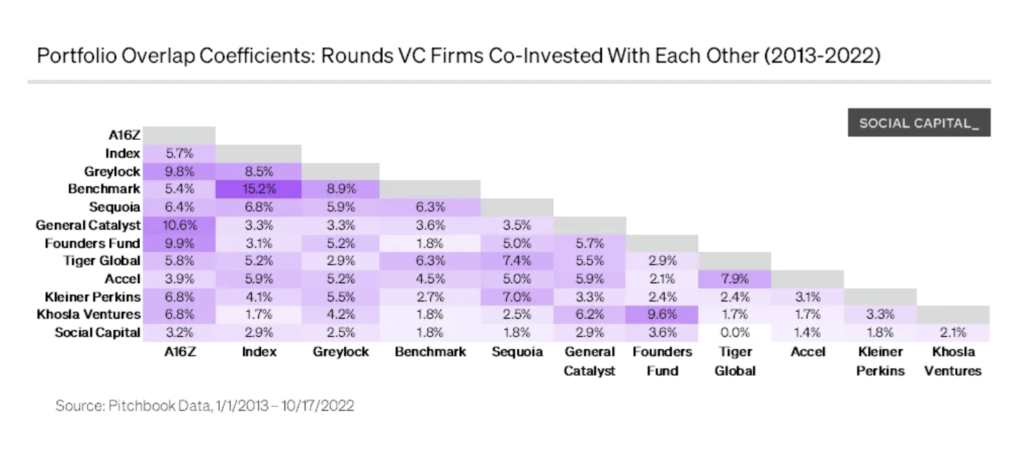This post looks at applications of generative AI in the context of the games industry, but much of the same logic can be applied elsewhere.
Adapting to technological evolution
With every new technology revolution – web3 most recently, and now AI – there follows a large herd of true believers. It can do all things, solve all ills, and life will never again be the same again. Enamoured by possibility, they follow with a true sense of opportunity.
Loudest amongst this herd (and most critical of nay-sayers) are the wolves in sheeps’ clothing. The rent-seeking charlatans.
This was explicit in the get-rich-quick era of web3, and much of the same problem has transferred over the AI as techno-pilgrims flee one sinking ship to pile into another.
Secondly, on the other side of the coin, are the cynics. People who were raised on 56k modems and bulletin boards, who feel a deep discomfort as technology moves beyond their grasp. They felt like the rational resistance to web3, and so have little hesitation about weighing in on AI.
We have to be conscious of both groups, and our own place on that spectrum.
Why the games industry?
There are three main reasons I’m keen to address the games industry as the case-study for this post:
- As with web3, AI is being shoved down people’s throats without due concern for why.
- It is largely focused on a young audience who are absent from these conversations.
- It connects with my personal experience in the games industry.
If you want to read about the potential use cases for AI in banking, you’ll find a thousand thought-leader think-pieces. It was well-covered ground without much original thought even before ChatGPT came along.
If you want to talk about the potential use cases of AI in the games industry, you’ll find some ex-crypto VCs and technologists trying desperately to pivot their brief experience. Insubstantial waffle.
Perfection is the enemy of good
Dealing with the more exciteable technophiles, you’ll probably notice they don’t show a lot of interest in the complex applications. Their interest is in the most extreme examples of movies, games or books being entirely generated by AI (or entirely decentralized, yada yada).
Their point is simple: if AI can do these things crudely today, then tomorrow it will be able to do them well – and at that point we’ll be forced to embrace the bold new future. Right?
This fallacy can be observed in every parent watching their child smear paint on paper for the first time: something inside them says ‘they could be a great artist’. It’s true: the ability to manifest art can be that simple, and the child has huge potential for improvement… Yet it’s still not going to happen for all but a miniscule few.
In both cases, the AI model and the child, there cannot merely be push, there must also be pull. There must be a need being met. An appetite being satisfied. And 99% of the time, there isn’t. Once the novelty has worn off, nobody has any interest in watching an AI-generated movie, reading an AI-generated novel, playing an AI-generated game, or looking at your child’s paintings. There just isn’t a call for it.
Instead of putting AI on the pedestal of a godlike creator, we should look at where it can be a tool to solve a problem.
Merchants of fun
You can get side-tracked in talking about experiences, socailising, adventuring, exploration, curiosity, challenge, status… Ultimately, games are vehicles for fun. That’s bedrock.
Is an AI-generated game likely to be more fun than the alternative? No, of course not, and if you suspect otherwise then you’ve not spent enough time with the wonderful and wacky people who make games. They are true creatives.
Any application of generative AI to the games industry must have either enhance fun, or enhance the developers ability to deliver it.
Exploration
If you look at games like Minecraft or 7 Days to Die where you can explore a proceedurally generated world, it’s easy to see how generative AI might be able to supercharge that environment building.
It’s worth considering, though, that this is a specific approach for a specific type of game. As good as these engines have gotten, most of the time games will require a more ‘designed’ world, with geography or features which play into gameplay mechanics, story elements or IP. Generative AI may offer tools to make this more efficient (as many proceedural tools already do), but is unlikely to replace it entirely.
Socialization
Imagine walking around a Skyrim or Cyberpunk style sandbox-world, full of NPC characters with their own unique look, voice, and personality. Each able to hold a conversation with you, flavoured with their own specific personality and knowledge. Not merely giving canned responses to pre-defined prompts, but able to interact fluidly with you and amongst themselves.
Again, this is unlikely to ever be all a game needs. Stories still require specifcally designed characters with particular roles which need to be shaped by the intention of writers and a design team, but it is still a tremendous opportunity to solve the social component of virtual worlds.
These are two quickly-sketched examples of how generative AI could enable a leap forward in the experience provided by games devleopers – and I am sure there are many more to be found.
Tapping into the market
I wanted to do this in a more subtle manner, but it’s just more practical to break down Andrew Chen’s Twitter thread:
Games can take 3+ years to build, and technology adoption happens at specific windows of time
If your generative AI tool is a plugin (for the Unreal Engine, for example) then a studio can pick it up at any time and add it to their development stack.
You shouldn’t be limited to thinking in terms of ideas that are ‘disruptive’ to how games are made, and indeed most of the opportunity may be in ideas which are complimentary.
indie games make little $. There’s only a few scaled players, who will always push on pricing
If you were going to target indie developers it would have to be with a very specific value proposition and business model (e.g. Unity in 2004). There’s no reason to worry about this otherwise; there are enough larger studios.
the games ecosystem is insular, with its own conferences, luminaries, and networks / networking” in the games industry often involves, well, gaming. Are you good at Valorant? 🙂
Can you tell me an industry which doesn’t have its own conferences, luminaries and networks?
The games industry is not insular, and it is comical to characterize it as a bunch of nerds playing games together. It’s a wonderfully open, social and diverse community.
a large % of game cos have artists and creative people. Many are threatened by, and oppose, AI tech
I don’t know of anyone in the games industry, artist or designer, who isn’t starry-eyed at the possibilities of what AI can enable.
They are also familiar enough with how games work to recognise that human input is always going to be required to shape and polish the human experience which emerges on the other side.
you need to generate editable, riggable, high-quality art assets. Right now assets are idiosyncratic and hard to edit
Generative AI has not yet proven that it can generate useable assets, never mind well-optimised thematic assets. That problem can probably be solved, but to what end?
Will a world created by a generative AI ever truly feel interesting, coherent, beautiful? Maybe there are better things for it to do?
large publishers often provide tech to their internal studios. They’ll partner to learn about AI, but will try to build in-house. Is your tech defensible?
That might have been the case 15 years ago, but the vast improvement in game engines and tools has meant that developers are much more likely to build on existing platforms.
If a publisher believes that a tool would make development cheaper and faster then they’ll support it without blinking.
large gaming cos care a lot about their models and data not being shared across the industry. How do you guarantee that? / they also care that their models are trained on data that’s safe from a copyright perspective. There’s lots of hoops to jump through
Stretching a bit here, but: You train your tools on an open set of data to the point where they are useable, and allow developers to provide additional training based on data from their own IP. In that scenario there is no reason for crossover between studios.
It’s unlikely that training from one game would ever be useful to the application of the AI in another. It is probably more likely to produce undesirable results.
Conclusion
Some years ago an associate of mine went to interview for a job at a games company in Seattle. The interviewer had previously been the lead designer on Starcraft, and naturally expected the candidate to play a match against him while fielding questions about the role.
The games industry is full of these amusing anecdotes of quirky behavior, and there is a pronounced culture associated with that. However, it is condescending to think that culture stands in the way of progress, or that games studios can’t engage with business and technology partners in a perfectly competent manner.
If you make a useful tool which solves a problem for the games industry, you will be able to access the right people to make a sale. I’d go so far as to say it’s probably easier and faster moving than many other industries.
If that is your aim, make sure you are spending enough time talking to games developers, learning about how games are made, understanding the player mentality, and the problems that you might be able to address. As always, finding product:market fit can require a lot of learning and iteration.
Most of all, ignore the false prophets who were reading from the web3 gospel just a few months ago. They will just ride this trend until something else comes along.







